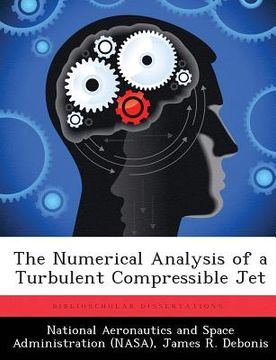Share
The Numerical Analysis of a Turbulent Compressible Jet (in English)
National Aeronautics and Space Administr
(Author)
·
James R. Debonis
(Author)
·
Biblioscholar
· Paperback
The Numerical Analysis of a Turbulent Compressible Jet (in English) - National Aeronautics and Space Administr ; Debonis, James R.
$ 48.80
$ 57.95
You save: $ 9.15
Choose the list to add your product or create one New List
✓ Product added successfully to the Wishlist.
Go to My WishlistsIt will be shipped from our warehouse between
Thursday, July 11 and
Friday, July 12.
You will receive it anywhere in United States between 1 and 3 business days after shipment.
Synopsis "The Numerical Analysis of a Turbulent Compressible Jet (in English)"
A numerical method to simulate high Reynolds number jet flows was formulated and applied to gain a better understanding of the flow physics. Large-eddy simulation was chosen as the most promising approach to model the turbulent structures due to its compromise between accuracy and computational expense. The filtered Navier-Stokes equations were developed including a total energy form of the energy equation. Subgrid scale models for the momentum and energy equations were adapted from compressible forms of Smagorinsky's original model. The effect of using disparate temporal and spatial accuracy in a numerical scheme was discovered through one-dimensional model problems and a new uniformly fourth-order accurate numerical method was developed. Results from two- and three-dimensional validation exercises show that the code accurately reproduces both viscous and inviscid flows. Numerous axisymmetric jet simulations were performed to investigate the effect of grid resolution, numerical scheme, exit boundary conditions and subgrid scale modeling on the solution and the results were used to guide the three-dimensional calculations. Three-dimensional calculations of a Mach 1.4 jet showed that this LES simulation accurately captures the physics of the turbulent flow. The agreement with experimental data was relatively good and is much better than results in the current literature. Turbulent intensities indicate that the turbulent structures at this level of modeling are not isotropic and this information could lend itself to the development of improved subgrid scale models for LES and turbulence models for RANS simulations. A two point correlation technique was used to quantify the turbulent structures. Two point space correlations were used to obtain a measure of the integral length scale, which proved to be approximately 1/2 D(sub j). Two point space-time correlations were used to obtain the convection velocity for the turbulent structures.
- 0% (0)
- 0% (0)
- 0% (0)
- 0% (0)
- 0% (0)
All books in our catalog are Original.
The book is written in English.
The binding of this edition is Paperback.
✓ Producto agregado correctamente al carro, Ir a Pagar.

